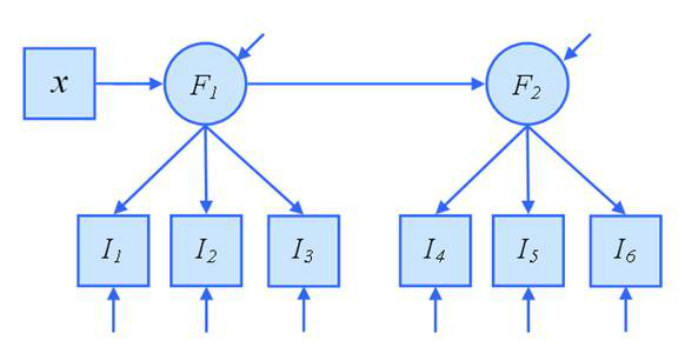Structural equation models
Structural Equation Models (SEMs) are statistical models, used primarily to evaluate whether theoretical models are plausible when compared to observed data. SEMs are very general, so for example regression and factor analysis are both just special cases of SEM.
Theory in the social sciences tends to be rich and complex, where multiple outcomes are seen as the result of multiple interacting factors and chains of mediation. Standard regression analysis cannot represent such theories in a single model, forcing the researcher to evaluate only partial or constrained models. SEMs allow for the representation of complex theory in a single, integrated model.
SEM allows researchers to take seriously the problems of modelling hypothetical constructs. Although sometimes not recognized as such, many of the phenomena of interest in the social sciences are not directly observable, even in principle, but are instead hypothetical constructs, intellectual devices that are used to categorise and give meaning to observed phenomena.
Examples
Examples include social capital, authoritarianism, trust and social class. SEMs allow the researcher to represent these hypothetical constructs explicitly and to distinguish the measurement of a construct from the key relationships among the constructs.

Additional Information
- Ed Ridgeon’s SEM FAQ website - A hub for SEM information: .
- An introductory textbook: Kline, R. B. (2004). Principles and Practice of Structural Equation Modeling(2nd Ed). New York: Guildford.
- An advanced textbook: Skrondal, A. & Rabe-Hesketh, S. (2004). Generalized Latent Variable Modeling. Boca Raton, Fla: Chapman.
Key historical references
- Jöreskog, K. G. (1970). A general method for analysis of covariance structures. Biometrika 57:239-51
- Wright, S. (1934). The method of path coefficients. The Annals of Mathematical Statistics, 5:161-215.
Staff interested in SEM
- Dr Ibrahim Abosag (previously MBS), International marketing and management
- Dr. Andrew Timming (previously MBS), International and Comparative Human Resource Management
- Dr Charles Cui (MBS), International Management and Marketing
- Dr Jim Freeman (MBS), SEM
- Dr Paul Irwing (MBS), Psychometrics, Organisational psychology
- Dr Rudolf Sinkovics (MBS), International Business
- Dr Stuart Hyde (MBS), Finance
- Professor Paul Cousins (MBS), Operations Management
- Professor Paul Jackson (MBS), Marketing
- Professor Stephan Henneberg (previously MBS), Marketing & Strategy
- Professor Gary Davies (MBS), Marketing International Business and Strategy
- Dr Richard Elmsley (Medicine), Statistical methods for causal inference
- Professor Christi Deaton (previously Nursing, Midwifery and Social Work), Structural equation modelling and multi-level modelling
- Dr Warren Mansell (Psychological Sciences), SEM
- Dr Alex Wood (Psychology), Personality and Well-being
- Dr Graeme Hutcheson (School of Education), Generalized linear models in postgraduate research; Predictive modelling of choice behaviour
- Professor Julian Williams (School of Education), Applied mathematics, mechanics, modelling and problem solving in science and technology
- Professor Alistair Hall (Social Sciences), Econometrics
- Dr David Cutts (previously Social Sciences), SEM
- Dr Mark Tranmer (Social sciences), SEM
- Dr Nick Shryhane (Social Sciences), Social Statistics
- Professor Edward Fieldhouse (Social sciences), Methods for modelling political behavior
- Professor Yaojun Li (Social Sciences), Sociology
Courses
PDF slides
Download PDF slides of the presentation 'What is structural equation modelling?'
